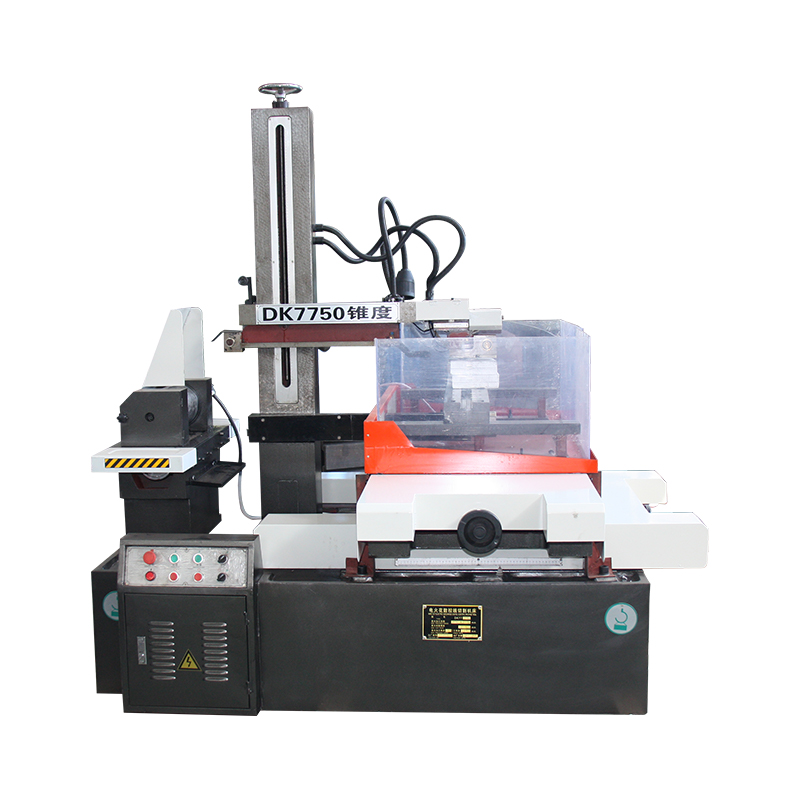High-Speed Wire Cutting: Revolutionizing Precision Manufacturing
 2025.01.30
2025.01.30
 Industry news
Industry news
In the world of precision engineering and manufacturing, the demand for high-quality, intricate cuts is continuously growing. From automotive parts to electronics, industries require cutting technologies that can deliver fine details with speed and accuracy. One such technology that is making waves in these industries is high-speed wire cutting. This innovative machining process is transforming the way manufacturers approach precision cutting, offering a faster, more efficient solution without compromising on quality.
The key feature of high-speed wire cutting is the ability to achieve intricate shapes and fine details, often with tolerances as tight as a few microns. This capability makes it an essential tool in industries such as aerospace, automotive, electronics, and medical device manufacturing, where precision is paramount.
High-speed wire cutting works by feeding a continuously moving wire through a workpiece, which is submerged in a dielectric fluid. The dielectric fluid helps to cool the material and flush away debris created during the cutting process. The wire itself is typically made of brass, which is both strong and conductive. It is guided by a series of computer-controlled motors, ensuring that the wire follows the programmed path with exceptional accuracy.
As the wire moves through the workpiece, an electrical discharge occurs between the wire and the material, creating a series of sparks. These sparks erode the material in small, controlled increments, effectively "melting" the material away. This process allows for highly detailed cuts that are impossible to achieve with traditional cutting methods.

The cutting process is continuous, meaning that the wire moves through the material at high speeds, often ranging from 5 to 10 meters per minute or more, depending on the material and complexity of the cut. The result is a clean, precise cut with minimal heat-affected zones (HAZ), which ensures that the material's properties remain unchanged in the cutting area.
One of the most significant advantages of high-speed wire cutting is its ability to produce highly accurate cuts with minimal tolerances. It can achieve precision down to a few microns, making it ideal for industries where exact dimensions are critical, such as aerospace, medical devices, and electronics.
High-speed wire cutting can be used on a wide range of conductive materials, including hardened steels, titanium, brass, and even certain non-ferrous metals. It is particularly valuable for cutting complex shapes and intricate geometries, including sharp corners and thin walls, which would be difficult or impossible to achieve with conventional tools.
Because wire cutting does not generate significant heat during the process, there is little to no thermal distortion of the material. This is a crucial advantage when working with delicate or heat-sensitive materials that could be damaged by conventional cutting methods, such as laser or plasma cutting.
Unlike traditional machining methods, where cutting tools can degrade and wear out over time, high-speed wire cutting uses a wire that is continuously fed through the material. This means there is no tool wear or need for tool changes, reducing downtime and maintenance costs.
High-speed wire cutting is a fast process, especially when compared to traditional machining methods. The ability to cut intricate shapes with high precision, combined with the lack of tool wear and minimal heat generation, makes the process highly efficient and cost-effective for high-volume production.
High-speed wire cutting is used across various industries, particularly those requiring tight tolerances and intricate designs. Some of the key sectors benefiting from this technology include:
The aerospace industry requires components that are both lightweight and incredibly precise. High-speed wire cutting is used to manufacture complex engine parts, turbine blades, and structural components that must meet stringent specifications.
Wire cutting is used in the production of automotive parts such as gears, shafts, and transmission components, where precision is essential for performance and safety. The technology allows for intricate cuts that are crucial in high-performance vehicles.
In the electronics industry, wire cutting is used to produce small, precise components like connectors, housings, and microelectronic parts. The ability to cut through materials like copper and aluminum makes wire cutting ideal for these applications.
High-speed wire cutting is also employed in the manufacture of medical devices and surgical tools. The ability to create fine, sharp edges on materials such as stainless steel is crucial in producing devices that require precision and safety.
Wire cutting is often used in the production of molds, dies, and tooling components for various manufacturing processes. Its ability to create highly detailed features and intricate designs is essential for producing high-quality molds and parts.
While high-speed wire cutting offers numerous benefits, there are some challenges to consider. The process can be slower than other machining methods for certain tasks, particularly when cutting thick materials. Additionally, the cost of the equipment and maintenance can be higher than traditional cutting tools, making it a significant investment for small to medium-sized manufacturers.
Moreover, the process requires a skilled operator to ensure that the machine is properly calibrated and that the correct parameters are set for each specific material and application. Proper maintenance and cleaning of the wire and dielectric fluid are also essential to maintaining the efficiency and quality of the cuts.
As manufacturing continues to evolve, high-speed wire cutting is expected to play an even more significant role in industries requiring precision and high-quality cuts. With advancements in automation, machine learning, and process optimization, the future of high-speed wire cutting looks promising. Companies are continuously exploring ways to improve the speed, efficiency, and versatility of this technology, further solidifying its place as a go-to solution for precision manufacturing.
In conclusion, high-speed wire cutting represents a revolutionary step forward in the world of precision machining. Its ability to deliver fast, accurate, and intricate cuts with minimal material distortion makes it an invaluable tool for industries across the board. As technology continues to advance, this process will only become more efficient, driving further innovation and progress in the world of manufacturing.


 English
English Español
Español









